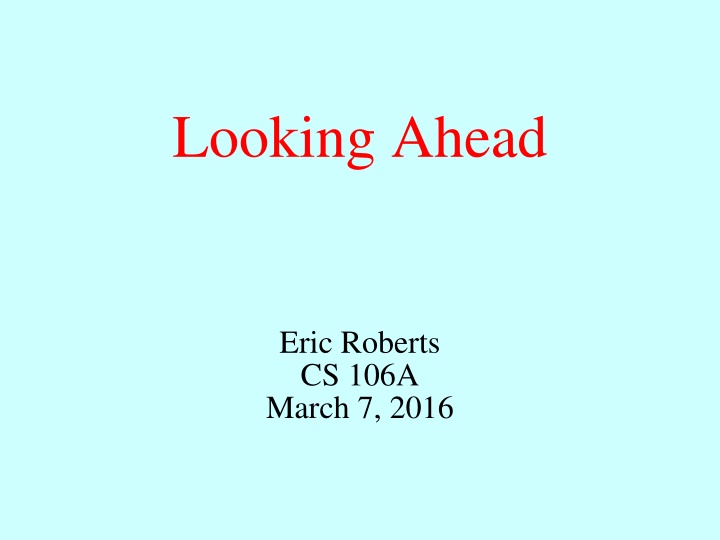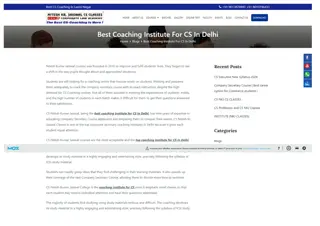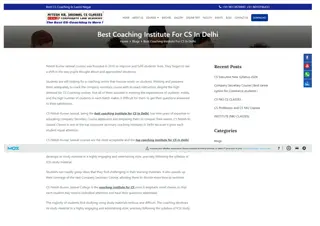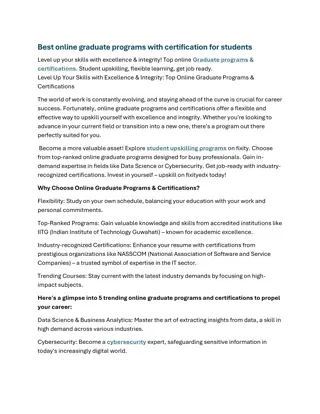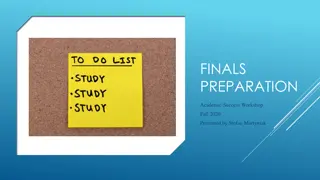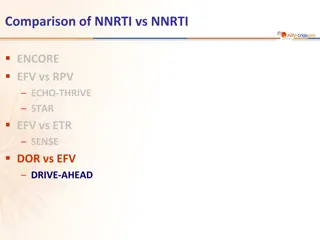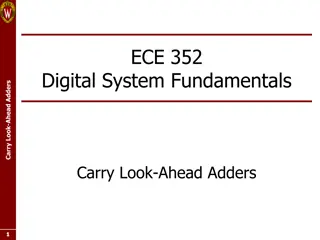Looking Ahead
Recursion is a powerful programming strategy where problems are solved by breaking them into smaller subproblems. It allows solutions at different levels using the same method. Learn about recursion and its importance in computer science. Explore programming patterns and their application in problem-solving.
Download Presentation

Please find below an Image/Link to download the presentation.
The content on the website is provided AS IS for your information and personal use only. It may not be sold, licensed, or shared on other websites without obtaining consent from the author.If you encounter any issues during the download, it is possible that the publisher has removed the file from their server.
You are allowed to download the files provided on this website for personal or commercial use, subject to the condition that they are used lawfully. All files are the property of their respective owners.
The content on the website is provided AS IS for your information and personal use only. It may not be sold, licensed, or shared on other websites without obtaining consent from the author.
E N D
Presentation Transcript
Looking Ahead Eric Roberts CS 106A March 7, 2016
Looking Ahead Chapter 14 offers a brief introduction to four topics that are sometimes included an introductory computer science course. In today s class, I ll offer a brief introduction to three of those topics: Recursion 1. Concurrency 2. Programming patterns 3. The first topic is a central theme of CS106B. The others are covered in more advanced classes.
Recursion Recursion is an extremely powerful programming strategy in which you solve a problem by dividing it into smaller subproblems of the same form. The italicized phrase represents an essential characteristic of recursion; without it, all you have is a description of stepwise refinement. The fact that recursive decomposition generates subproblems that have the same form as the original problem means that recursive programs will use the same method to solve subproblems at different levels of the solution. In terms of the structure of the code, the defining characteristic of recursion is having methods that call themselves, directly or indirectly, as the decomposition process proceeds.
A Simple Illustration of Recursion Suppose that you are the national fundraising director for a charitable organization and need to raise $1,000,000. One possible approach is to find a wealthy donor and ask for a single $1,000,000 contribution. The problem with that strategy is that individuals with the necessary combination of means and generosity are difficult to find. Donors are much more likely to make contributions in the $10 range. Another strategy would be to ask 100,000 friends for $10 each. Unfortunately, most of us don t have 100,000 friends. There are, however, more promising strategies. You could, for example, find ten regional coordinators and charge each one with raising $100,000. Those regional coordinators could in turn delegate the task to local coordinators, each with a goal of $10,000, continuing the process reached a manageable contribution level.
A Simple Illustration of Recursion The following diagram illustrates the recursive strategy for raising $1,000,000 described on the previous slide: Goal: $1,000,000 Goal: $100,000 Goal: $100,000 Goal: $100,000 Goal: $100,000 Goal: $100,000 Goal: $100,000 Goal: $100,000 Goal: $100,000 Goal: $100,000 Goal: $100,000 Goal: $10,000 Goal: $10,000 Goal: $10,000 Goal: $10,000 Goal: $10,000 Goal: $10,000 Goal: $10,000 Goal: $10,000 Goal: $10,000 Goal: $10,000 Goal: $1000 Goal: $1000 Goal: $1000 Goal: $1000 Goal: $1000 Goal: $1000 Goal: $1000 Goal: $1000 Goal: $1000 Goal: $1000 Goal: $100 Goal: $100 Goal: $100 Goal: $100 Goal: $100 Goal: $100 Goal: $100 Goal: $100 Goal: $100 Goal: $100
A Pseudocode Fundraising Strategy If you were to implement the fundraising strategy in the form of a Java method, it would look something like this: private void collectContributions(int n) { if (n <= 100) { Collect the money from a single donor. } else { Find 10 volunteers. Get each volunteer to collect n/10 dollars. Combine the money raised by the volunteers. } } What makes this strategy recursive is that the line Get each volunteer to collect n/10 dollars. will be implemented using the following recursive call: collectContributions(n / 10);
A More Familiar Example public void run() { findMidpoint(); putBeeper(); } private void findMidpoint() { if (frontIsBlocked()) { turnAround(); } else { move(); if (frontIsClear()) { move(); } findMidpoint(); move(); } }
Recursive Functions The easiest examples of recursion to understand are functions in which the recursion is clear from the definition. As an example, consider the factorial function from Chapter 5, which can be defined in either of the following ways: n! = n x(n - 1)x(n - 2)x. . .x3 x2 x1 1 if n is 0 n! = n x(n - 1)! otherwise The second definition leads directly to the following code, which is shown in simulated execution on the next slide: private int factorial(int n) { if (n == 0) { return 1; } else { return n * factorial(n - 1); } }
Simulating the factorial Method public void run() { int n = readInt("Enter n: "); println(n + "! = " + factorial(n) ); } return 1; } else { return n * factorial(n - 1); } } } } } } } } } } } } } private int factorial(int n) { if (n == 0) { private int factorial(int n) { if (n == 0) { return 1; } else { return n * factorial(n - 1); } else { return n * factorial(n - 1); } else { return n * factorial(n - 1); } else { return n * factorial(n - 1); } else { return n * factorial(n - 1); return n * factorial(n - 1); } 120 n private int factorial(int n) { if (n == 0) { return 1; if (n == 0) { return 1; if (n == 0) { return 1; if (n == 0) { return 1; return 1; } else { 5 private int factorial(int n) { n private int factorial(int n) { 5 n 24 private int factorial(int n) { private int factorial(int n) { if (n == 0) { 4 n 6 3 n 2 2 n 1 1 n n 1 0 0 Factorial Enter n: 5 5! = 120 skip simulation skip simulation
The Recursive Paradigm Most recursive methods you encounter in an introductory course have bodies that fit the following general pattern: if (test for a simple case) { Compute and return the simple solution without using recursion. } else { Divide the problem into one or more subproblems that have the same form. Solve each of the problems by calling this method recursively. Return the solution from the results of the various subproblems. } Finding a recursive solution is mostly a matter of figuring out how to break it down so that it fits the paradigm. When you do so, you must do two things: Identify simple casesthat can be solved without recursion. 1. Find a recursive decompositionthat breaks each instance of the problem into simpler subproblems of the same type, which you can then solve by applying the method recursively. 2.
Solution: A Recursive gcd Function Exercise: A Recursive gcd Function In the discussion of algorithmic methods in Chapter 5, one of the primary examples was Euclid s algorithm for computing the greatest common divisor of two integers, x and y. Euclid s algorithm can be implemented using the following code: public int gcd(int x, int y) { if (x % y == 0) { return y; } else { return gcd(y, x % y); } } } return y; } public int gcd(int x, int y) { int r = x % y; while (r != 0) { x = y; y = r; r = x % y; As always, the key to solving this problem lies in identifying the recursive decomposition and defining appropriate simple cases. taking advantage of Euclid s insight that the greatest common divisor of x and y is also the greatest common divisor of y and the remainder of x divided by y. Rewrite this method so that it uses recursion instead of iteration,
Concurrency One of the initial design criteria for Java was that it be able to support concurrency, which is simply the ability to carry on several activities in parallel, even on computers that have only one processor. The classical approach to supporting concurrency is called multiprogramming, in which a computer with a single processor runs multiple programs by sharing that processor among each of the individual processes. The computer runs one process for a short period and then switches over to one of the other processes, cycling around the different tasks to ensure that they all get a fair share of processor time. Java supports concurrency at a lower level by allowing users to create new threads, which are independent activities that coexist when the same program and share access to the same memory space. As in multiprogramming, a multithreaded system shares the processor among the active threads.
A Simple Concurrent Application The TestAnimatedSquareprogram on the next slide offers a simple illustration of multithreaded programming. Each of the squares shown in the sample run below is an instance of the AnimatedSquareclass, which implements the Runnableinterface which allows it to support a thread. The runmethod for each square causes it to move in a random direction, which changes every 50 steps. TestAnimatedSquare
The TestAnimatedSquare Program /** * This program tests the AnimatedSquare class by putting two squares * on the screen and having them move independently. */ public class TestAnimatedSquare extends GraphicsProgram { public void run() { double x1 = getWidth() / 3 - SQUARE_SIZE / 2; double x2 = 2 * getWidth() / 3 - SQUARE_SIZE / 2; double y = (getHeight() - SQUARE_SIZE) / 2; AnimatedSquare redSquare = new AnimatedSquare(SQUARE_SIZE); redSquare.setFilled(true); redSquare.setColor(Color.RED); add(redSquare, x1, y); AnimatedSquare greenSquare = new AnimatedSquare(SQUARE_SIZE); greenSquare.setFilled(true); greenSquare.setColor(Color.GREEN); add(greenSquare, x2, y); Thread redSquareThread = new Thread(redSquare); Thread greenSquareThread = new Thread(greenSquare); waitForClick(); redSquareThread.start(); greenSquareThread.start(); } /* Private constants */ private static final double SQUARE_SIZE = 75; }
The AnimatedSquare Class /** * This class creates an animated square that has its own thread of control. * Once started, the square moves in a random direction every time step. * After CHANGE_TIME time steps, the square picks a new random direction. */ public class AnimatedSquare extends GRect implements Runnable { /* Creates a new AnimatedSquare of the specified size */ public AnimatedSquare(double size) { super(size, size); } /* Runs when this object is started to animate the square */ public void run() { for (int t = 0; true; t++) { if (t % CHANGE_TIME == 0) { direction = rgen.nextDouble(0, 360); } movePolar(DELTA, direction); pause(PAUSE_TIME); } } /* Private constants */ private static final double DELTA = 2; /* Pixels to move each cycle */ private static final int PAUSE_TIME = 20; /* Length of time step */ private static final int CHANGE_TIME = 50; /* Steps before changing direction */ /* Private instance variables */ private RandomGenerator rgen = RandomGenerator.getInstance(); private double direction; }
Programming Patterns In 1994, Addison-Wesley published Design Patterns, a groundbreaking book that called attention to the fact that many programming problems are most easily solved by applying certain common software patterns. Although the patterns described in the book are typically implemented using classes and methods, each pattern tends to represent more of a general solution strategy for some class of problems and not a ready- made solution.
The Model/View/Controller Pattern The user interacts with a MVC-based user interface through the controller, which is the part of the system capable of accepting user commands. It is typically a collection of Swing interactors. state of the system but is separate from the user interface. that the user sees on the display. which is often abbreviated as MVC. The controller never updates the displayed data directly. It instead sends requests to the model, which keeps track of the more views, which are responsible for updating the information to user-interface design is the model/view/controller pattern, When changes occur in the model, it sends messages to one or One of the most important patterns in terms of its applicability Controller Model View
The HousePoints Program The HousePointsprogram described in section 14.4 uses the model/view/controller pattern to present two views of the house points assigned to the Hogwarts houses at the end of J. K. Rowling sHarry Potter and the Philosopher s Stone. The first appears as a bar graph, the second as a pie chart. In this example, the role of the controller is taken by the interactors at the bottom of the window. The controller sends messages to the model, which in turn updates both views. HousePoints Graph 312, 352, 426, 472 312, 352, 426, 472 4, 352, 426, 472 48, 352, 426, 472 482, 352, 426, 472 Points
